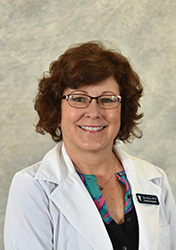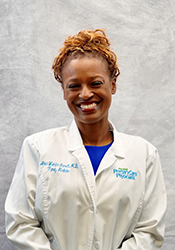Category Archives: Health & Wellness
Be Smart About Antibiotics
By: Patricia Chambliss, M.D.
Antibiotics are drugs that fight infections caused by bacteria. The first antibiotic, penicillin, was developed in 1927, and since then antibiotics have transformed medical care, greatly reducing illness and death from infectious diseases.
However, antibiotics don’t work all the time. They can’t be used for some bacterial infections, including most cases of bronchitis, many sinus infections and some ear infections. They also don’t work on viruses, such as colds and flu.
Misusing antibiotics – such as taking them when you don’t need them or not finishing all of your medicine – can lead to the development of bacteria that are immune to antibiotics, so-called “super bugs.” Antibiotic-resistant bacteria are a growing problem, says the CDC, and there is concern that antibiotics may eventually become ineffective.
Does this mean you should stop taking antibiotics? No, but you need to be smart about how you use them. Don’t take antibiotics if your doctor hasn’t prescribed them, and if you are prescribed antibiotics, take the entire prescription, even if you’re feeling better. Also, talk to your doctor about antibiotic use and other ways to feel better when you’re sick.
See the chart below to find out which common illnesses can or can’t be treated by antibiotics. And educate yourself about antibiotics: how they work and when to take them.
| Common Illnesses | Caused by: Bacteria | Caused by: Bacteria or Virus | Caused by: Virus | Will Antibiotics Work? |
|---|---|---|---|---|
| Strep throat | X | Yes | ||
| Whooping cough | X | Yes | ||
| Urinary tract infection | X | Yes | ||
| Sinus infection | X | Maybe | ||
| Middle ear infection | X | Maybe | ||
| Bronchitis/chest cold | X | No | ||
| Common cold | X | No | ||
| Sore throat (not strep) | X | No | ||
| Flu | X | No |
 Dr. Patricia Chambliss is certified by the American Board of Family Medicine. She sees patients in MPCP’s Pasadena office.
Dr. Patricia Chambliss is certified by the American Board of Family Medicine. She sees patients in MPCP’s Pasadena office.
Poison Ivy, Oak and Sumac
By: Lisa Meade, PA-C
Poison Ivy, Oak and Sumac are toxic plants native to most parts of the United States. The rash is due to the oil urushiol that is in the roots, stems and leaves. Most people are allergic to this oil. After your skin comes in contact with the oil, the reaction can take up to 72 hours to develop. You do not need to touch the plant directly in order to have a reaction. Clothing, shoes, lawn equipment and pets all can transfer the oil to your skin.
The skin reaction, also called Contact Dermatitis, causes redness, swelling, blisters and itching. If you inhale the smoke from the burning of these plants you can develop respiratory symptoms. Scratching the skin can lead to a secondary bacterial infection. The rash can last several weeks even with treatment.
You can reduce your chances of developing a reaction if you rinse your skin with water thoroughly and wash your clothing immediately after known contact. Once the rash has started, taking an antihistamine and using hydrocortisone cream or Calamine lotion can help reduce the symptoms and speed healing. If you have a widespread rash, pus oozing from the blisters or any respiratory symptoms you should seek medical attention.

Finding Help for Depression
I’m Doctor Ariel Warden-Jarrett. I’m one of the board-certified family physicians here at Maryland Primary Care Physicians.
Did you know that by the year 2020 depression is projected to be the number two cause of disability in the U.S.?
You may also be surprised to know that depression is something that your primary care doctor can effectively treat and help you to overcome.
Depression can have many causes. It can begin with a life situation that causes unusual sadness. It can also be a byproduct of hormone imbalances in the brain and other organs. Or it can accompany heart disease and chronic pain.
In fact, many chronic health conditions can put you at higher risk for depression – things like MS, diabetes, or a previous heart attack. And the normal response to trauma or loss can also be a trigger.
But when sadness leads to a loss of normal functioning, depression may be the diagnosis.
You and your doctor can begin to work together to help you restore, what I call, your “joy bubbles.”
And remember, discovering that you might be depressed is not a bad thing. On the contrary, it can be the first step on the path to finding a happier, healthier life for you and your family.
To help make that a reality, your doctor may prescribe medications or refer you for counseling, but these are just part of the treatment story:
- Lifestyle is also important – Regular exercise can make a big difference.
- Getting more exposure to sunlight and fresh air.
- Listening to music that you enjoy – All of these things can help.
- And the right diet can also have a big impact on your mood and outlook on life.
So, talk to your primary care physician. Take that first step. Together, we can get your balance back, and those “joy bubbles” popping again. You’ll find that you can get plenty of help from the doctor you already know and trust.
For more information, contact Maryland Primary Care Physicians.
 Dr. Warden-Jarrett is a Maryland Primary Care Physicians, LLC partner and is certified by the American Board of Family Medicine. She sees patients in the Bowie office.
Dr. Warden-Jarrett is a Maryland Primary Care Physicians, LLC partner and is certified by the American Board of Family Medicine. She sees patients in the Bowie office.
Your Snoring May be More Than a Nuisance
By: Fred Rost
I have been a snorer for quite a few years, much to the chagrin of my wife. This often resulted in her having to move to another bedroom and get a terrible night’s sleep. This left me feeling guilty for robbing her of sleep while I got a good night’s rest (or so I thought).
I often felt tired during the day but attributed it to an active lifestyle and a high metabolism that kept me from ever slowing down. I never thought it could be due to my not getting a good night’s rest. After all, my wife told me that I would fall asleep as soon as my head hit the pillow, and I generally slept through the night.
However, she also told me that she would sometimes hear me stop breathing and then gulp for air. As a result, we were pretty sure that I was suffering from sleep apnea, a common sleep disorder caused by a narrowing of the upper airway. During sleep, this keeps oxygen from entering the lungs, resulting in less oxygen reaching vital organs.
In adults, the most common cause of sleep apnea is excess weight and obesity, but it can also be caused by something you’re born with, such as a narrow throat or thick neck. Whatever the reason, sleep apnea puts you at increased risk for high blood pressure, diabetes, heart disease and injury from accidents.
My wife and I talked about my doing a sleep study to confirm our suspicions, but I had an issue with going to a sleep lab and trying to sleep with things attached to my body. Also, being a stomach sleeper, I couldn’t imagine using the sleep apnea treatment at the time: an airflow device called a CPAP machine that required you to sleep on your back while wearing a face mask with straps and hoses all over the place. I was certain I could never get a wink of sleep under such cruel and unusual circumstances!
Fast-forward to January 2018. A friend of mine suffering from sleep apnea told me she had taken a home sleep study (which, by the way, can be scheduled with our Columbia Cardiology office), was diagnosed with obstructive sleep apnea (OSA), and was prescribed the latest technology in CPAP therapy, which allowed her to sleep on her side and not just her back. And most importantly, it was helping her to get a better night’s rest.
I went to see my MPCP physician, took a home sleep study, was diagnosed with severe OSA, and was approved by my insurance carrier to start CPAP therapy. Once I started using the machine, it took me just four days to get used to sleeping with it before I was able to use it throughout the night
The results have been dramatic. I no longer snore. I feel more rested now that I’m reaching a deeper state of sleep, called REM, which my doctor explained is the most restorative stage of your sleep cycle. Before, I was not experiencing REM due to my sleep being constantly interrupted, but that has changed now that I have addressed my sleep issues.
If you suspect that you or a loved one is suffering from sleep apnea, I encourage you to have a sleep study performed, either at a sleep lab or at home, to see if you too would benefit from this technology. As I’m finding out, it can greatly improve the quality of your night’s rest and your overall health.
 Fred Rost is Director of Marketing and Physician Recruitment for MPCP, and a former snorer.
Fred Rost is Director of Marketing and Physician Recruitment for MPCP, and a former snorer.



